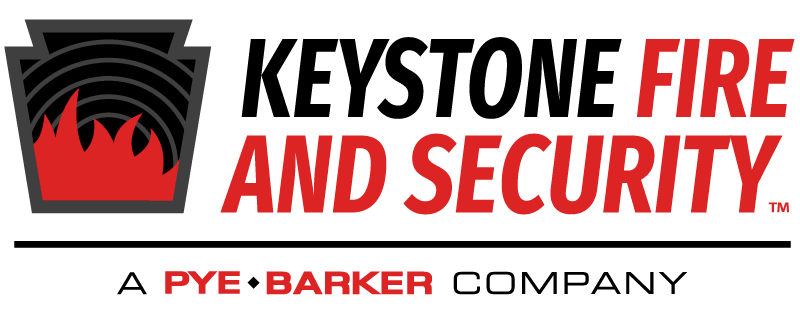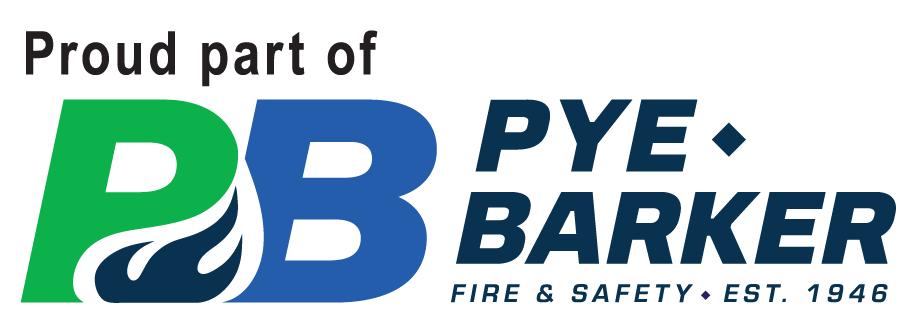Frequently Asked Questions
Serving commercial and industrial organizations in Pennsylvania, New Jersey, and Delaware.
How does an Ansul System work?
An ANSUL R-102 suppression system is often used in restaurant kitchen and/or commercial cooking settings. When a fire starts In the protected area, such as a grease fire under the kitchen hood, a heat sensitive fusible link detects the fire and activates the system. This causes automatic shut down of appliance energy sources that would otherwise add fuel to the fire. Once appliances are shut down, the fire suppressing agent stored in the ANSUL system tank is discharged through piping in the protected area and a discharge nozzle evenly disperses the agent over the cooking appliances and fire. The chemical agent in an ANSUL system mixes with the hot grease to create a foam substance which temporarily seals combustible vapors to inhibit reignition.
Is a fire extinguisher a fire suppression system?
Technically, yes. A fire suppression system is any product that is designed to stop a fire from spreading and limit the damage it may cause. This means a fire extinguisher and fire sprinkler system could be considered types of fire suppression systems. Typically, when referring to “fire suppression systems” Keystone Fire and Security is describing chemical or agent based systems like a Clean Agent Fire Suppression System, a Carbon Dioxide CO2 Suppression System, Restaurant Fire Suppression Systems, Industrial Fire Protection Systems, and Small Space Protection Systems. You can learn more about each of these systems by clicking the associated link.
What is the difference between fire protection & fire suppression?
Fire protection is both an industry as well as all its components; it includes fire alarm and detection systems, fire suppression systems, fire sprinkler systems, and fire extinguishers. Fire suppression is a subcategory of fire protection. By definition, these terms could be used interchangeably, but those in the industry refer to it as fire protection and reserve “fire suppression” for describing a type of system.
What type of gas is used in a fire suppression system?
The type of gas used in a fire suppression system depends on the type of system being used and the asset that is being protected. Learning about the different systems and gases can help you make the right choice for your business.
Carbon Dioxide or CO2 suppression systems are most suitable for unstaffed data storage rooms, hazardous material storage areas, and other similar places that have little to no human occupancy. This is because carbon dioxide, which has an extremely high density, smothers the fire by removing the oxygen it needs to continue burning. This happens quickly and you do not want anyone to be trapped in the room when all oxygen is removed.
Another type of fire suppression system is the clean agent FM-200® which uses hydrofluorocarbons (HFCs) to put out fires. The FM-200 system extinguishes combustible, electrical, and flammable liquid fires in 10 seconds or less through heat absorption, breaking the fire triangle (heat—oxygen—fuel). The industry moved away from similar Halon systems and toward FM-200 systems when halon was banned by the US Environmental Protection Agency in 1989 due to ozone depletion potential. The HFCs in FM-200 were found to have a low ozone depletion potential.
A similar system with an extremely low ozone depletion level and highest margin of environmental safety is the NOVEC 1230®. This clean agent system was originally developed as a replacement for Halon systems and the HFCs found in FM-200s. Halocarbons are a family of chemicals that can be found in a NOVEC 1230. These chemicals are stored as a fluid and are vaporized when discharged. This process acts similarly to an FM-200 in that they extinguish the fire by rapid cooling.
For hazards with low temperatures and high ceiling heights, the FE-13® is a high-pressure clean agent manufactured by DuPont that leaves no residue when discharged. It is used mainly for Class A, B, and C fires like industrial high ceiling spaces, locomotives, unheated storage areas, and oil platforms. It is reactive with some metals, however, so it is important to consult a fire protection expert to decide if this system is right for your facility.
For a system with naturally occurring gases, Argonite™ consists of 50% Nitrogen and 50% Argon. Together, this mixture extinguishes fires by reducing the oxygen in a room while still being safe for humans and the environment. According to Kidde, a manufacturer of Argonite suppression systems, it is best used in applications such as: flight simulators, substations, and control rooms.
The last alternative in fire suppression is an Inergen system. This system uses inert, clean agent gases like nitrogen, argon, and carbon dioxide (CO2) to reduce the oxygen in a fire, thus suppressing it. While this action of suppression is similar to a CO2 suppression system, it is much safer to use around people due to the different concentration of gases.
What is a clean agent fire suppression system?
There are three main parts to a clean agent fire suppression system: smoke detectors, a control panel, and notification devices. The smoke detectors work as expected and detect a fire in its early stages, before it has time to become uncontrollable. Detectors send a signal to the control panel, which alerts system notification devices which alerts occupants of a fire and that the clean agent is about to be released. The suppression system is then activated, and the agent is released. The most common types of clean agent fire suppression systems are FM-200®, NOVEC 1230®, and Inergen because they all use gases that are safe for the environment and humans.
Does a dry fire suppression system work?
Fire suppression systems are all “dry” because they use gaseous agents to put out fires. No water is used in a fire suppression system, which is why many businesses chose them to protect high value assets that cannot risk water damage.
Industries Served

